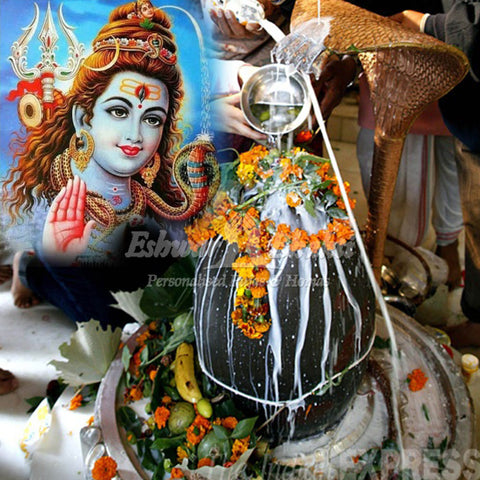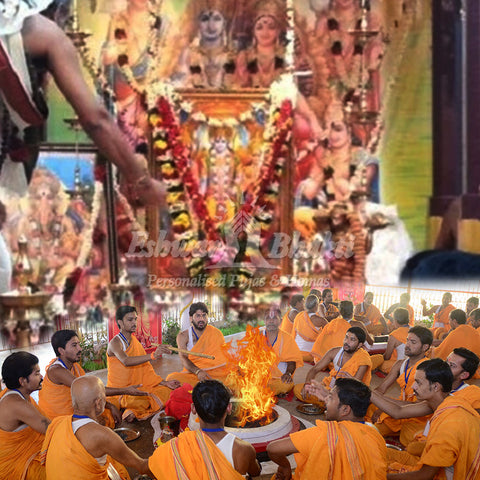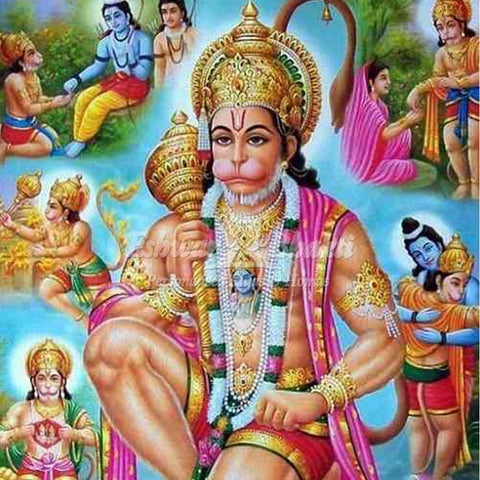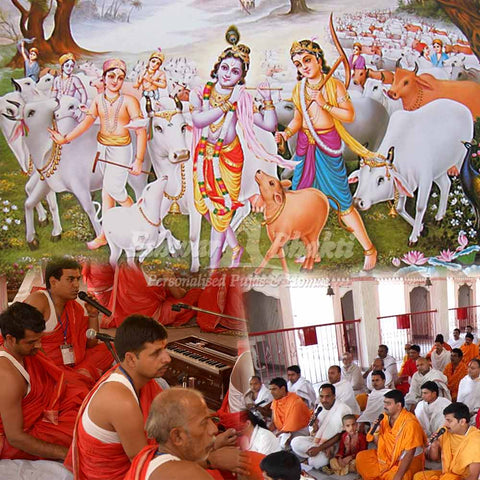What is Kalash?
 Kalash is an auspicious symbol in Hinduism and is a copper vessel with a big base and a small mouth. It is commonly known as Purna Kalasha, Purna-Kumbha, and Purna Ghata. As per Rig Veda, Purna Kalash represents abundance and life source. Devotees fill the Kalash with holy water and place a coconut on top of it during Pujas. The head of the coconut faces the sky, and they keep mango leaves, sometimes betel vines, dipped in the water. Some might fill the vessel with coins, gems, gold, or grains as well. There are several stories associated with the origin of Kalash.
Kalash is an auspicious symbol in Hinduism and is a copper vessel with a big base and a small mouth. It is commonly known as Purna Kalasha, Purna-Kumbha, and Purna Ghata. As per Rig Veda, Purna Kalash represents abundance and life source. Devotees fill the Kalash with holy water and place a coconut on top of it during Pujas. The head of the coconut faces the sky, and they keep mango leaves, sometimes betel vines, dipped in the water. Some might fill the vessel with coins, gems, gold, or grains as well. There are several stories associated with the origin of Kalash.
Samudra Manthan was the churning of the ocean by the Asuras and Devas to find Amrit, the elixir of life. During the process, they finally received Amrit in a Kalash. Kalash, thus, became the symbol of immortality as it contained Amrit. Another story associated with Kalash is that before the creation of the Universe, Lord Vishnu remained in his snake-bed in the milky ocean. A lotus emerged from his navel, which transformed into Lord Brahma, who then created the world. Devotees believe that the water in Kalash is akin to the primal water from which the creator formed the entire universe.
Significance of Kalash: Kalash represents abundance and wisdom. Hindu deities, including Lord Brahma, Lord Shiva, and Goddess Lakshmi, hold a Kalash in their hands. Many devotees believe that Kalash is the personification of Lord Ganesha, who is the remover of obstacles from our lives, and Gauri Devi, goddess of household bounty. Devotees worship Kalash, an image of Devi during Hindu festivals associated with childbirth and marriage. We can place Kalash near the entrance of our houses as a sign of welcome, facing the North, in the center. The North implies balance, and by placing Kalash in that direction, we are inviting balance and happiness to our lives.
Religious, Spiritual, and Scientific Significances of Kalash:
Kalash has gained immense importance in the religious rituals of Hinduism. Kalash is an auspicious symbol in Buddhism and Jainism as well. As per Skandha Purana, Devas obtained it while churning the ocean. When the Kalash is filled with water or rice, it is known as Purna Kumba. It is a representation of our inert bodies, possessing the divine life force. There are different spiritual and religious significances associated with using Kalash in a Puja. Here, we will be discussing some of the most relevant aspects of Kalash and the components used for it.
1. Devotees believe that the metal pot is a container of fertility. It stands for the Earth and the womb, which are the nourishers and providers of life. The mango leaves depict the Kama, the god of love. Through its usage, we are invoking the pleasure aspect of fertility. Coconut presents prosperity and power. The water in the Kalash symbolizes the life-giving principle of the universe.
2. In Purna Kalash, devotees attach a silver or brass face over the coconut to spread positivity. Purna Kalash is a depiction of our Mother Earth. The water and other elements in the Kalash symbolize the prosperity of our Earth, including the vegetation and minerals.
3. We can associate Kalash with the five elements or Pancha Bhootas. The metal pot at its base stands for Prithvi or Earth. At its center, it presents the Ah or water principle, and at its neck, it links with Agni or fire. The opening of the vessel is a depiction of Vayu or Air. Coconut and mango leaves used in the Kalash signifies Akasha or the ether principle.
4. Kalash also represents our chakras. It helps in balancing the imbalances or energy flow through our bodies as well. The vibrations emanating from it can cure any blockage or excess of vitalizations in our bodies. Here, the Shira or the head of the coconut signifies the Sahasrara or crown chakra. The base of the metal vessel represents the Muladhara or root chakra.
5. Devotees believe that Kalash is the embodiment of all the gods. It can create subtle vibrations, which can purify and enhance our vitalities. The mango or betel leaves used in it keep the deity seated. The water in it can keep it purified for a long time. Coconut can attract divine principles and transmit it to the water.
6. The water used in Kalasha is pure, and it can attract Sattvik frequencies. Though it does not possess the ability to protect the Sattva particles, you can enhance the Sattva principle by using a copper vessel. Copper can imbibe Sattva by up to 30%, and it can also transmit them. It can also remove Raja-Tama frequencies, which can destroy the Sattva particles. Betel leaves can also enhance Sattva and Raja elements present in the water as betel acts as an Earth component.
7. Coconut is a symbolic representation of the three-eyed Lord Shiva. The mouth and throat of the Kalash are the seats of Lord Vishnu, Lord Shiva, and Lord Brahma. Its belly is the abode of the divine mother.
8. Kalash, as mentioned earlier, is a microcosmic portrayal of the cosmos. The water in the Kalash as the factor that paved the way for creation. The leaves and coconut as the depiction of different creations in the universe. The thread around the neck of the Kalash is the symbol of the love that binds everyone.
9. Another significance associated with Kalash is that it is present in one of the four arms of Lord Dhanvantarti. He holds different healing instruments. They include Shankh, Chakra, Jalouka, and Kalash. Kalash has Amrith, which can aid in curing a person.
10. As per Ayurveda, betel leaf has several herbal properties. They can kill germs and bacteria. They can also energize our bodies. Mango leaves are also sacred, and they can ward off negativities and evil forces.
11. The water from the Kalash is either used in Kumba Abhisheka or poured on a Tulsi plant. It can attract positive vibrations and aid in the process of purification.
12. As per Vasthu Shastra, when Kalash is placed facing the Northern direction. It can invite prosperity, positivity, and wisdom.
These are some of the significances associated with placing a Kalash. The use of Kalash in a puja can aid a devotee to purify his or her mind and body. It can revitalize the energy flow and help us to absorb the divine principle.




